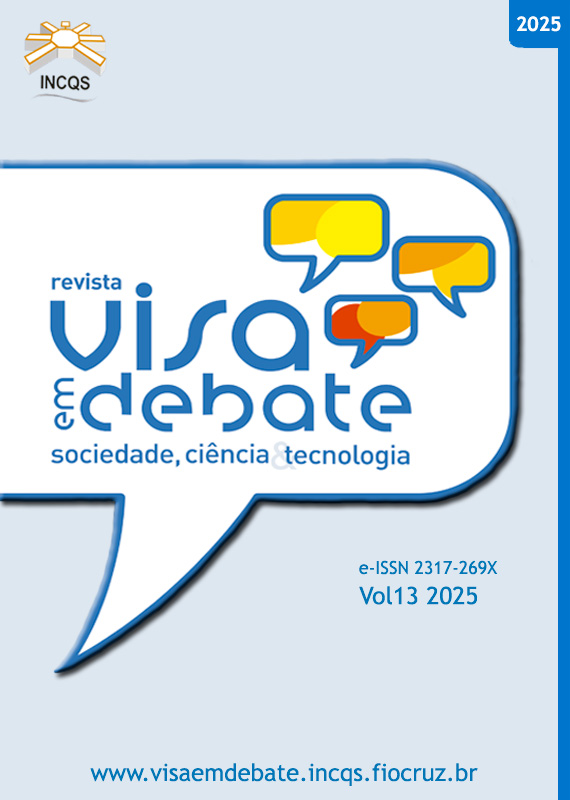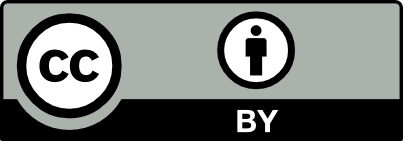Second phase of generic drugs in Brazil: implementation of the vasoconstrictor assay for dermatological topical corticosteroids
Vigil Sanit Debate, Rio de Janeiro, 2025, v.13: e02275 | Published on: 26/06/2025
DOI:
https://doi.org/10.22239/2317-269X.02275Keywords:
Therapeutic Equivalency, Generic, Adrenal Cortex Hormones, VasoconstrictionAbstract
Introduction: In Brazil, the sale of generic medicines has been increasing, driven by the search for more affordable alternatives. However, this expansion necessitates the assurance of safety and efficacy, particularly in the case of topical medications containing corticosteroids. Until 2022, these products were exempt from bioequivalence testing, with only pharmaceutical equivalence being required. Objective: This study aimed to discuss the registration of topical medications containing corticosteroids in Brazil, highlighting recent regulatory changes and the impact of the mandatory implementation of the Vasoconstrictor Assay (VCA). Method: The methodology consisted of a systematic review of scientific literature and national and international regulatory guidelines, focusing on the registration criteria for topical corticosteroid medications. The study provided a detailed examination of the VCA, a pharmacodynamic test that evaluates the degree of skin blanching following drug application, divided into a pilot study (defining Emax and ED50) and a main study (comparison with the reference product). Results: It was demonstrated that the VCA is widely adopted in international regulatory contexts, such as by the U.S. Food and Drug Administration (FDA) since 1995. In Brazil, its introduction presents a technical challenge, as most bioequivalence centers require appropriate expertise and infrastructure. Nevertheless, studies indicate that the method has the potential to effectively demonstrate bioequivalence. Conclusions: The requirement of the VCA represents a regulatory milestone in Brazil, fostering greater technical rigor in the registration of topical corticosteroid medications. Its adoption is essential to ensure the quality, safety, and efficacy of these products for the population.
Downloads
References
1. Associação Brasileira das Indústrias de Medicamentos Genéricos e Biossimilares. Genéricos. PróGenericos. 2023[acesso 10 set 2023]. Disponível em: https://progenericos.org.br/genericos/
2. Brasil. Lei Nº 9.787 de 10 de fevereiro de 1999. Altera a lei Nº 6.360, de 23 de setembro de 1976, que dispõe sobre a vigilância sanitária, estabelece o medicamento genérico, dispõe sobre a utilização de nomes genéricos em produtos farmacêuticos e dá outras providências. Diário Oficial União. 11 fev 1999.
3. Brasil. Decreto No 3.181, de 23 de setembro de 1999. Regulamenta a lei Nº 9.787, de 10 de fevereiro de 1999, que dispõe sobre a vigilância sanitária, estabelece o medicamento genérico, dispõe sobre a utilização de nomes genéricos em produtos farmacêuticos e dá outras providências. Diário Oficial União. 24 set 1999.
4. Agência Nacional de Vigilância Sanitária - Anvisa. Resolução RDC Nº 91, de 9 de agosto de 1999. Aprova regulamento técnico para medicamentos genéricos. Diário Oficial União. 3 mar 2007.
5. Brasil. Lei Nº 9.782, de 26 de janeiro de 1999. Define o Sistema Nacional de Vigilância Sanitária, cria a Agência Nacional de Vigilância Sanitária, e dá outras providências. Diário Oficial União. 27 jan 1999.
6. Agência Nacional de Vigilância Sanitária - Anvisa. Resolução RDC Nº 742, de 10 de agosto de 2022. Dispõe sobre os critérios para a condução de estudos de biodisponibilidade relativa/bioequivalência (BD/BE) e estudos farmacocinéticos. Diário Oficial União. 10 ago 2022.
7. Mehta M, Schug B, Blume HH, Beuerle G, Jiang W, Koenig J et al. The global bioequivalence harmonisation initiative (GBHI): report of the fifth international EUFEPS/AAPS conference. Eur J Pharm Sci. 2023;190:1-14. https://doi.org/10.1016/j.ejps.2023.106566
8. Boix-Montanes A. Relevance of equivalence assessment of topical products based on the dermatopharmacokinetics approach. Eur J Pharm Sci. 2011;42(3):173-9. https://doi.org/10.1016/j.ejps.2010.11.003
9. Chang RK, Raw A, Lionberger R, Yu L. Generic development of topical dermatologic products: formulation development, process development, and testing of topical dermatologic products. AAPS J. 2013;15(1):41-52. https://doi.org/10.1208/s12248-012-9411-0
10. Harris R. Demonstrating therapeutic equivalence for generic topical products. Pharm Technol. 2015;39(11):1-4.
11. Miranda M, Sousa JJ, Veiga F, Cardoso C, Vitorino C. Bioequivalence of topical generic products part 1: where are we now? Eur J Pharm Sci. 2018;123:260-7. https://doi.org/10.1016/j.ejps.2018.07.050
12. Miranda M, Sousa JJ, Veiga F, Cardoso C, Vitorino C. Bioequivalence of topical generic products part 2: paving the way to a tailored regulatory system. Eur J Pharm Sci. 2018;122:264-72. https://doi.org/10.1016/j.ejps.2018.07.011
13. Araujo TP, Fittipaldi IM, Bedor DCG, Duarte ML, Cordery SF, Guy RH et al. Topical bio(in) equivalence of metronidazole formulations
in vivo. Int J Pharm. 2018;541(1-2):167-72. https://doi.org/10.1016/j.ijpharm.2018.02.032
14. Chagas SCC, Pimenta CAP, Kishishita J, Barbosa ICF, Bedor DCG, Aquino KAS et al. Mupirocin ointments: In vitro x In vivo bioequivalence evaluation. Braz J Pharm Sci. 2022;58:1-10. https://doi.org/10.1590/s2175-97902022e19426
15. Leal LB, Cordery SF, Delgado-Charro MB, Bunge AL, Guy RH. Bioequivalence methodologies for topical drug products: in vitro and ex vivo studies with a corticosteroid and an anti-fungal drug. Pharm Res. 2017;34(4):730-7. https://doi.org/10.1007/s11095-017-2099-1
16. Agência Nacional de Vigilância Sanitária – Anvisa. Resolução RDC Nº 37, de 3 de agosto de 2011. Dispõe sobre o Guia para isenção e substituição de estudos de biodisponibilidade relativa/bioequivalência e dá outras providências. Diário Oficial União. 4 ago 2011.
17. Agência Nacional de Vigilância Sanitária – Anvisa. Resolução RDC Nº 31, de 11 de agosto de 2010. Dispõe sobre a realização dos estudos de equivalência farmacêutica e de perfil de dissolução comparativo. Diário Oficial União. 12 ago 2010.
18. Cavalcanti IMFSD, Chagas SC, Sousa GD, Barbosa ICF, Santana DP, Leal LB. Topical bioequivalence: evaluation of hydrocortisone acetate, betamethasone valerate and mupirocin marketed brazilian products. Lat Am J Pharm. 2019;38(6):1122-9.
19. Soares KCC, Moraes MV, Gelfuso GM, Gratieri T. Bioequivalência de medicamentos tópicos dermatológicos: o cenário brasileiro e os desafios para a vigilância sanitária. Cienc Saúde Colet. 2015;20(11):3599-608. https://doi.org/10.1590/1413-812320152011.01082015
20. Agência Nacional de Vigilância Sanitária - Anvisa. Resolução RDC Nº 73, de 7 de abril de 2016. Dispõe sobre mudanças pós-registro, cancelamento de registro de medicamentos com princípios ativos sintéticos e semissintéticos e dá outras providências. Diário Oficial
União. 11 abr 2016.
21. United States Pharmacopeia – USP. <1724> semisolid drug products: performance tests. 42nd ed. Rockville: United States Pharmacopeia; 2023.
22. Leal LB, Araujo TP, Chagas SCC, Andrade ARB, Bedor DCG, Santana DP. Registro de medicamentos genéricos tópicos dermatológicos: cenário brasileiro e estudos para demonstração de bioequivalência. Vigil Sanit Debate. 2017;5(2):3-12. https://doi.org/10.22239/2317-269x.00814
23. US Food and Drug Administrartion – USFDA. Guidance for industry: topical dermatologic corticosteroids: in vivo bioequivalence. Rockville: US Food and drug administration; 2023[acesso 20 set 2023]. Disponível em: https://www.fda.gov/regulatory-information/search-fdaguidance-documents/topical-dermatologic-corticosteroidsin-vivo-bioequivalence20Information/Guidances/ucm070234.pdf
24. Agência Nacional de Vigilância Sanitária – Anvisa. Consulta pública Nº 760 de 27 de dezembro de 2019. Proposta de resolução da diretoria colegiada - RDC, que dispõe sobre os critérios para a condução de estudos de biodisponibilidade relativa/bioequivalência (BD/BE). Diário Oficial União. 29 dez 2019.
25. Sudhapriyadharshini G. Topical glucocorticoids: a review. J Pharm Sci Res. 2014;6(6):244-6.
26. Mehta AB, Nadkarni NJ, Patil SP, Godse KV, Gautam M, Agarwal S. Topical corticosteroids in dermatology. Indian J Derm Vener Lepr. 2016; 82(4):371-8. https://doi.org/10.4103/0378-6323.178903
27. Spada F, Barnes TM, Greive KA. Comparative safety and efficacy of topical mometasone furoate with other topical corticosteroids. Australas J Dermatol. 2018;59(3):e168-74. https://doi.org/10.1111/ajd.12762
28. Devaraj NK, Rashid AA, Manap AHA, Nasir S. Topical corticosteroids in clinical practice. Med J Malaysia. 2019;74(2):187-9.
29. Tincopa-Wong, OW. Corticoides tópicos actualización y uso racional. Dermatol Peru. 2016;26(4):194-223.
30. Stacey SK, McEleney M. Topical corticosteroids: choice and application. Am Fam Physician. 2021;103(6):337-43.
31. Ministério da Saúde (BR). Dermatologia na atenção básica de saúde. Brasília: Ministério da Saúde; 2002[acesso 21 set 2023]. Disponível em: https://bvsms.saude.gov.br/bvs/publicacoes/guiafinal9.pdf
32. Zvidzayi M, Rath S, Bon C, Abboo S, Kanfer I. A novel approach to assess the potency of topical corticosteroids. Pharmaceutics. 2021;13(9):1-11. https://doi.org/10.3390/pharmaceutics13091456
33. Rath S, Zvidzayi M, Bon C, Kanfer I. Application of Emax model to assess the potency of topical corticosteroid products. Basic Clin Pharmacol Toxicol. 2022;131(3):165-173. https://doi.org/10.1111/bcpt.13759
34. Mckenzie AW, Stoughton RB. Method for comparing percutaneous absorption of steroids. Arch Dermatol. 1962;86(5):608-10.
https://doi.org/10.1001/archderm.1962.01590110044005
35. Stoughton RB. Are generic formulations equivalent to trade name topical glucocorticoids? Arch Dermatol. 1987;123(10):1312-4.
36. Jackson DB, Thompson C, McCormack JR, Guin JD. Bioequivalence (bioavailability) of generic topical corticosteroids. J Am Acad Dermatol. 1989;20(5pt1):791-6. https://doi.org/10.1016/s0190-9622(89)70091-8
37. Olsen EA. A double-blind controlled comparison of generic and trade-name topical steroids using the vasoconstriction assay. Arch Dermatol. 1991;127(2):197-201.
38. Humbert P, Guichard A. The topical corticosteroid classification called into question: towards a new approach. Exp Dermatol. 2015;24(5):393-5. https://doi.org/10.1111/exd.12677
39. Kanfer I. Methods for the assessment of bioequivalence of topical dosage forms: correlations, optimization strategies, and innovative approaches. In: Shah VP, Maibach HI, Jenner J, editors. Topical drug bioavailability, bioequivalence, and penetration. New York: Springer; 2015. p. 113-51.
40. Wiedersberg S, Leopold CS, Guy RH. Dermatopharmacokinetics of betamethasone 17-valerate: influence of formulation viscosity and skin surface cleaning procedure. Eur J Pharm Biopharm. 2009;71(2):362-6. https://doi.org/10.1016/j.ejpb.2008.10.001
41. Smith EW, Haigh JM, Walker RB. Analysis of chromameter results obtained from corticosteroid-induced skin blanching I: manipulation of data. Pharm Res. 1998;15(2):280-5. https://doi.org/10.1023/a:1011926920834
42. Smith, EW, Haigh JM, Surber C. Quantification of corticosteroid-induced skin vasoconstriction: visual ranking, chromameter measurement or digital imaging analysis. Dermatology.2002;205(1): 10, 2002.
43. US Food and Drug Administrartion – USFDA. Guidance for industry: topical dermatologic corticosteroids: in vivo bioequivalence. Rockville: Food and drug administrartion; 2022[acesso 15 set 2023]. Disponível em: https://www.fda. gov/regulatory-information/search-fda-guidance-documents/topical-dermatologic-corticosteroids-in-vivo-bioequivalence-0
44. Agência Nacional de Vigilância Sanitária – Anvisa. Instrução normativa N° 123, de 24 de março de 2022. Aprova o roteiro de inspeção em centros de biodisponibilidade/bioequivalência de medicamentos. Diário Oficial União. 25 mar 2022.
45. Agência Nacional de Vigilância Sanitária – Anvisa. Centros nacionais certificados. Brasília: Agência Nacional de Vigilância Sanitária; 2023[acesso 15 set 2023]. Disponível em: https://www.gov.br/anvisa/pt-br/setorregulado/regularizacao/medicamentos/equivalencia-terapeutica/bioequivalencia/bioequivalencia-e-biodisponibilidade/centros-nacionais-certificados/pernambuco/universidadefederal-de-pernambuco-nucleo-de-desenvolvimentofarmaceutico-e-cosmetico-nudfac
Downloads
Published
Issue
Section
License
Copyright (c) 2025 Health Surveillance under Debate: Society, Science & Technology

This work is licensed under a Creative Commons Attribution 4.0 International License.
COPYRIGHT ALLOWANCE The author (s) hereinafter designated as the ASSIGNOR hereby assign and transfer, free of charge, the ownership of the copyrights related to this ARTICLE to the Vigilância Sanitária em Debate: Sociedade, Ciência & Tecnologia (Health Surveillance under Debate: Society, Science & Technology) – Visa em Debate, represented by FUNDAÇÃO OSWALDO CRUZ, established at Av. Brasil, nº 4365, Manguinhos, Rio de Janeiro, RJ, Brazil, CEP 21045-900, under the conditions set out below: (a) The terms and conditions set forth in this Agreement shall apply to the following: 1. The ASSIGNOR declares that they s(he) is (are) the author (s) and owner (s) of the copyrighted property of the ARTICLE submitted. 2. The ASSIGNOR declares that the ARTICLE does not infringe the copyrights and / or other property rights of third parties, that the disclosure of images (if any) has been authorized and that they s(he) assume(s) full moral and / or property liability for its content, before third parties. 3. THE ASSIGNOR assigns and transfers all copyrights relating to the ARTICLE to the ASSIGNEE, especially the rights of editing, publication, translation into another language and reproduction by any process or technique. The ASSIGNEE becomes the exclusive owner of the rights related to the ARTICLE, and any reproduction, totally or partially, is prohibited in any other means of publicity, printed or electronic, without prior written authorization from the ASSIGNEE. 4. The assignment is free and, therefore, there will be no remuneration for the use of the ARTICLE by the ASSIGNEE.






